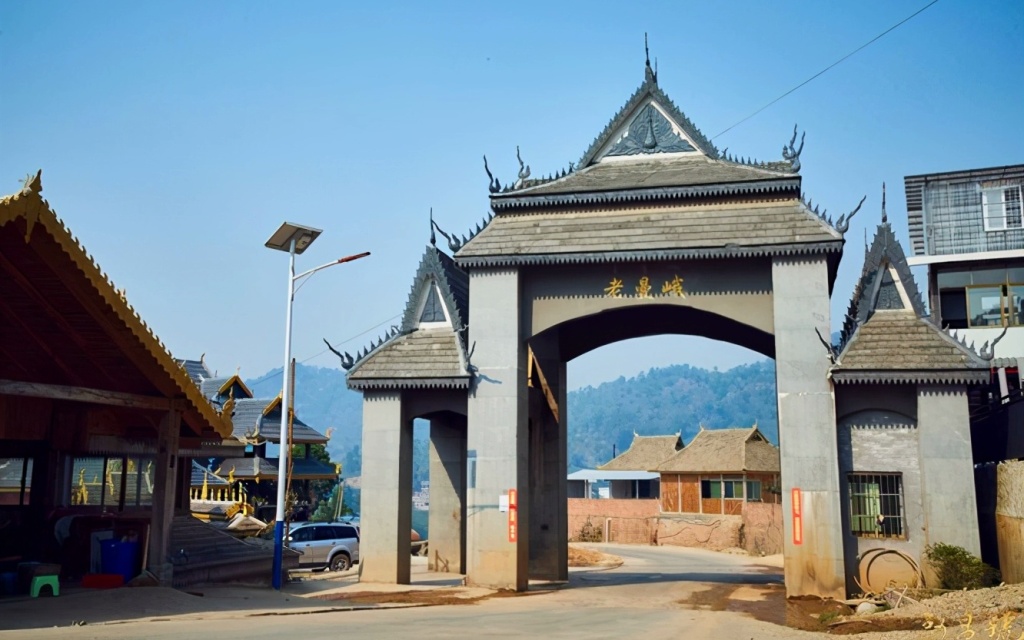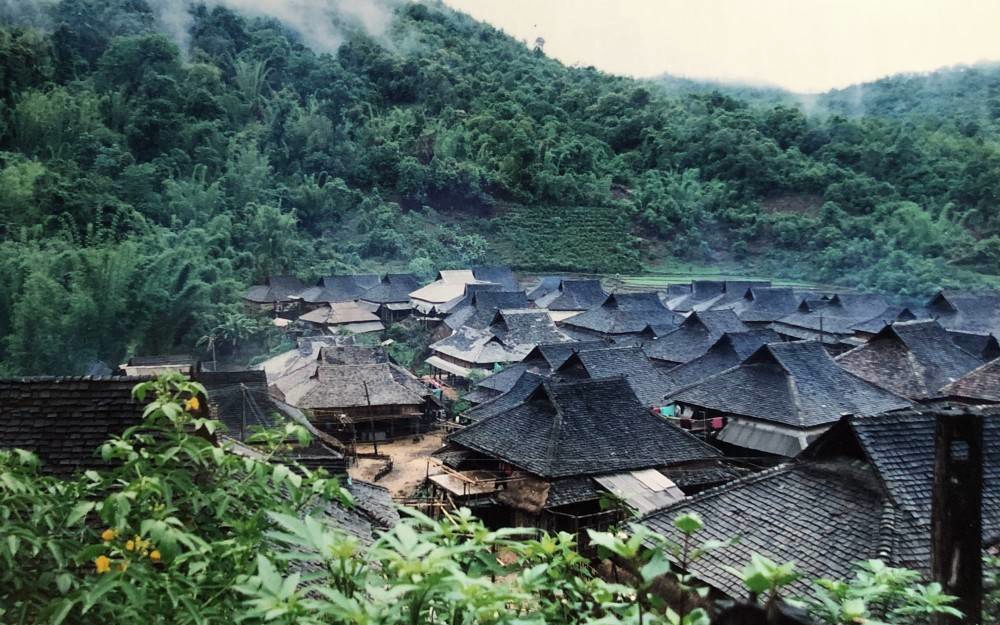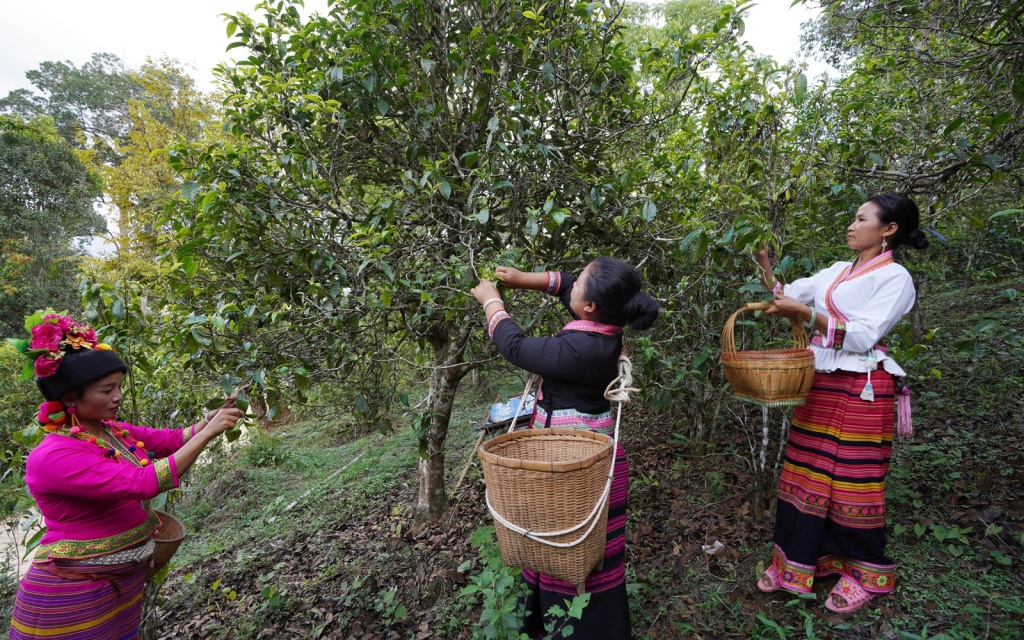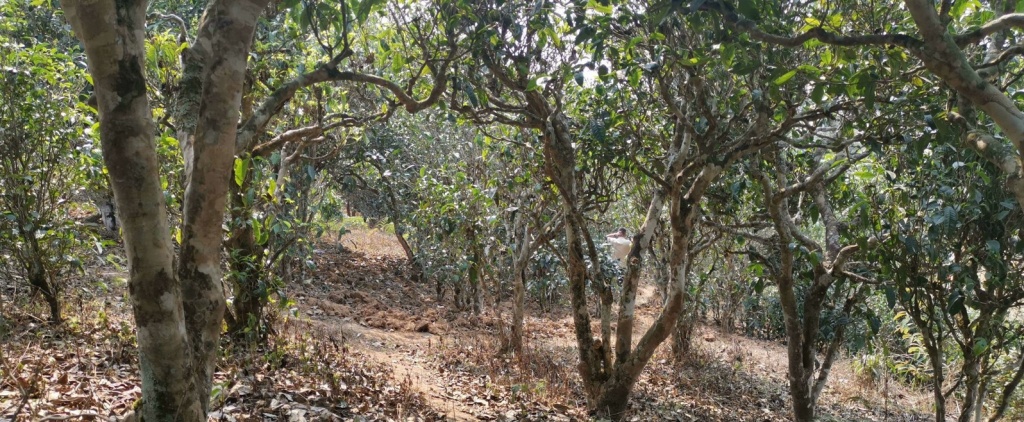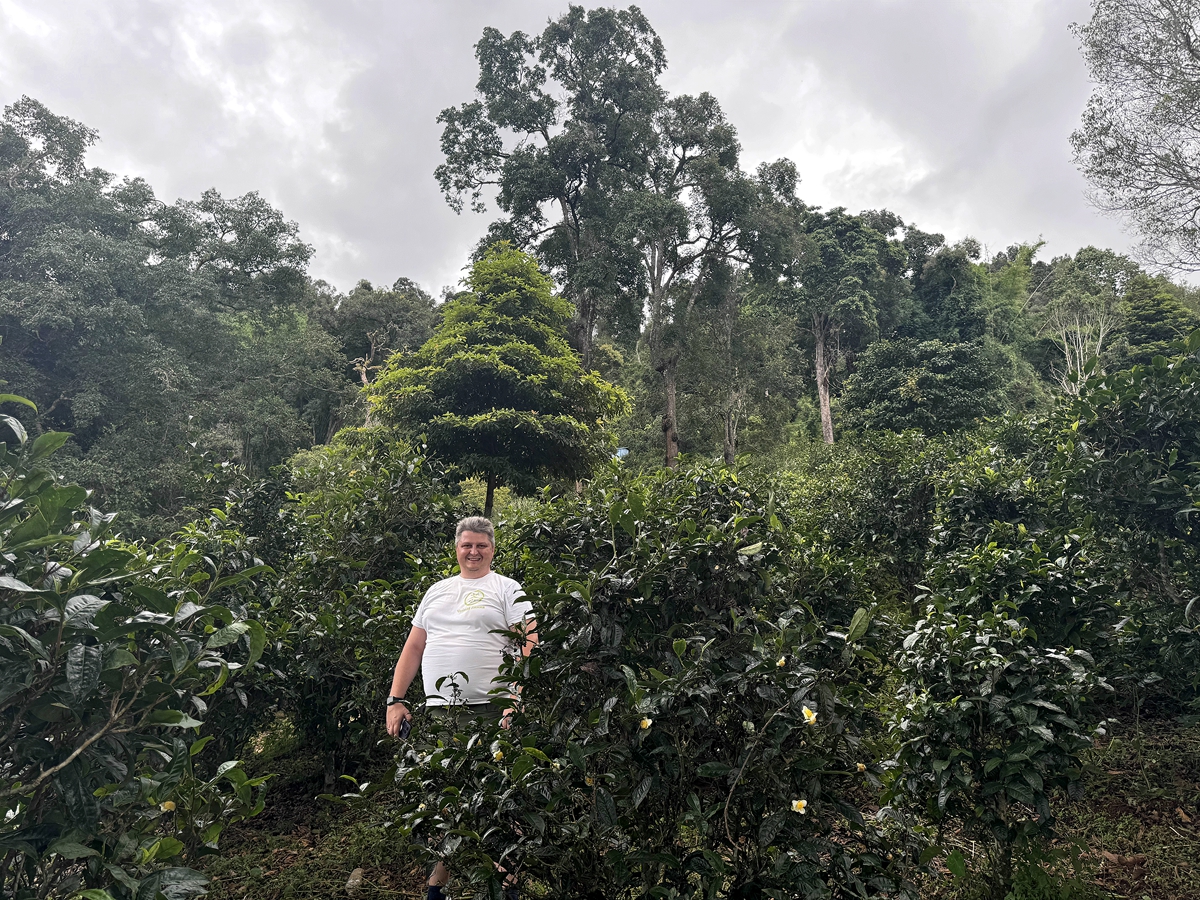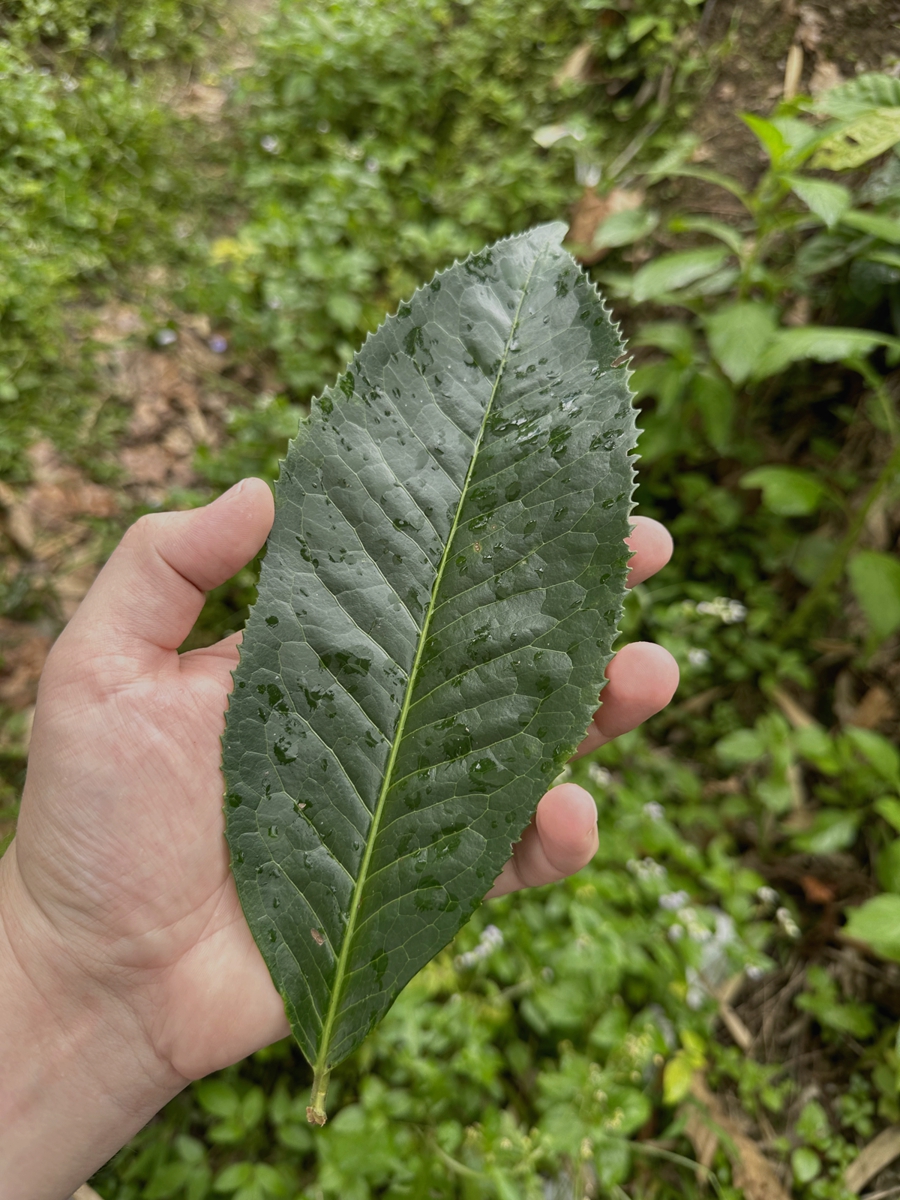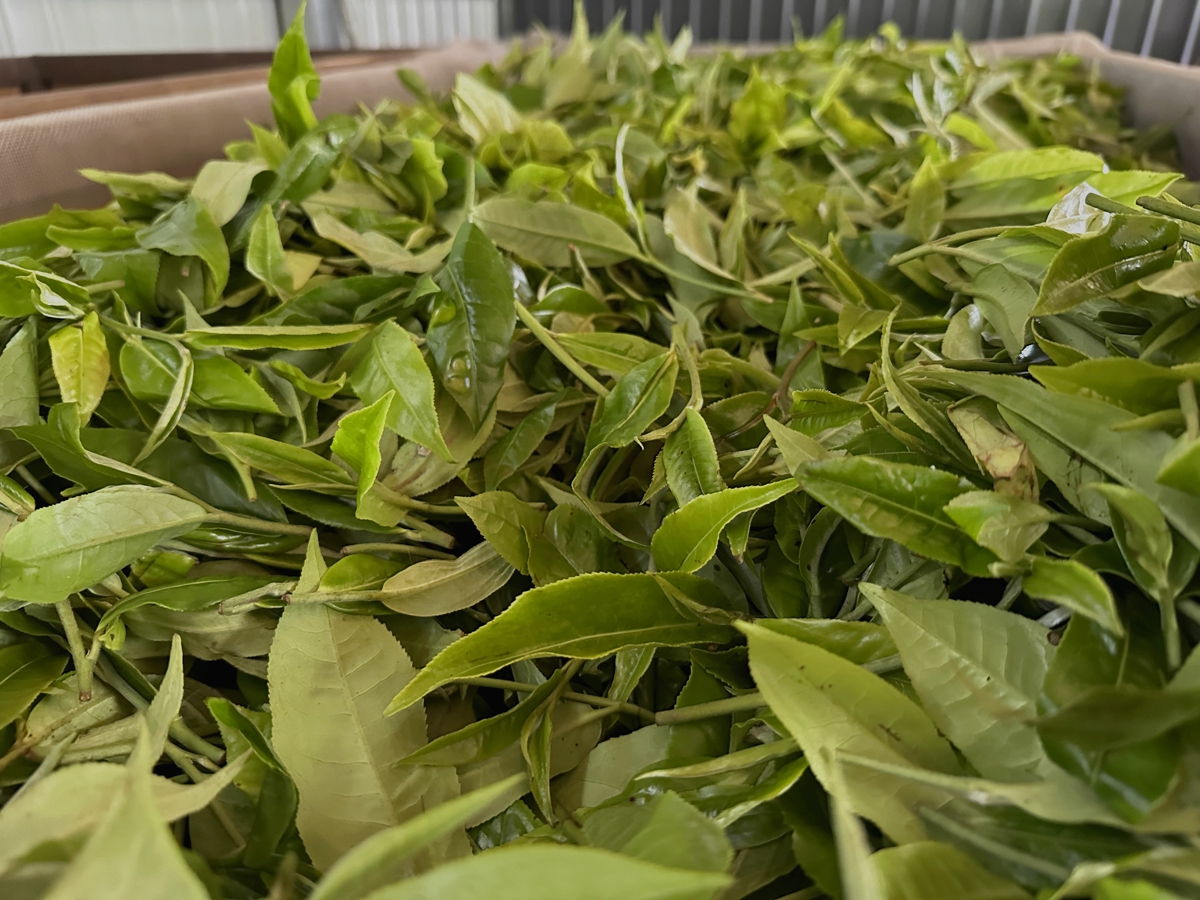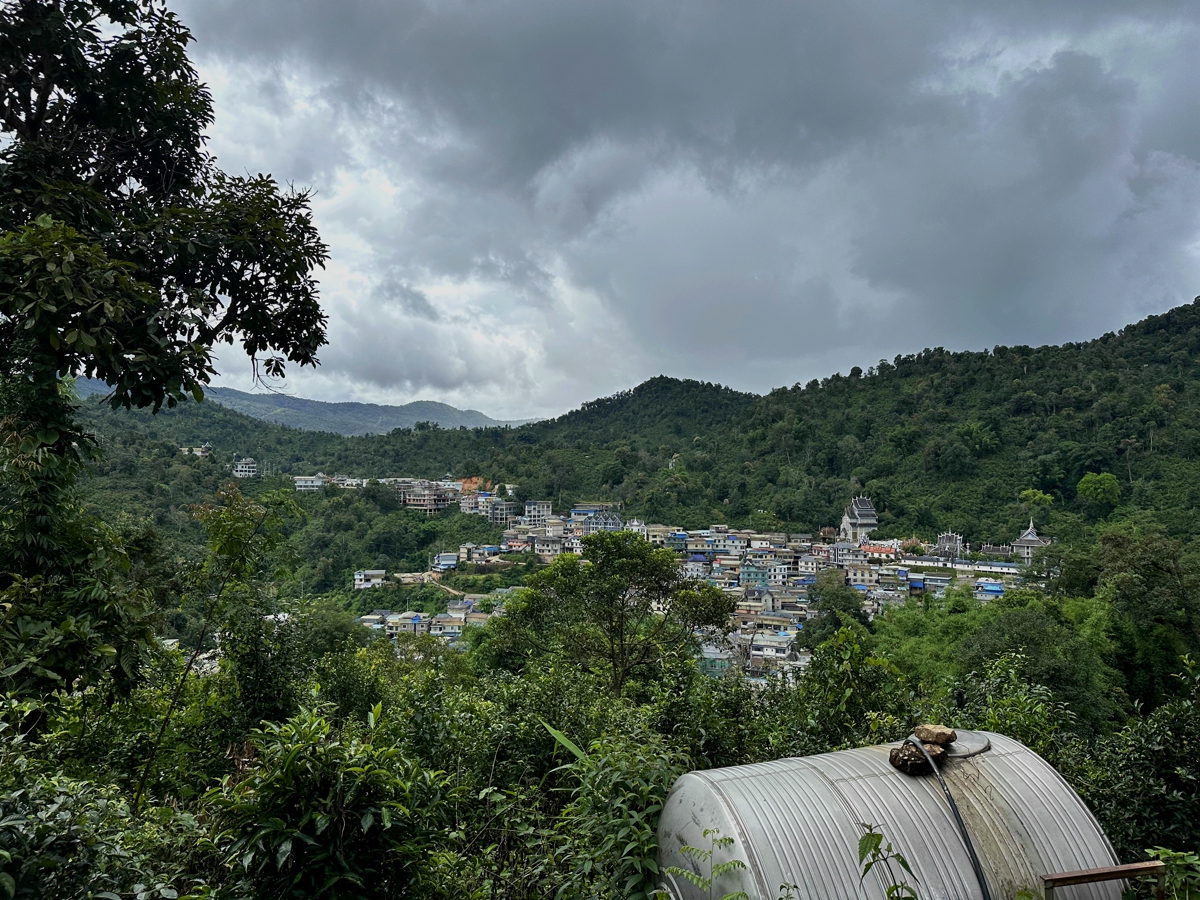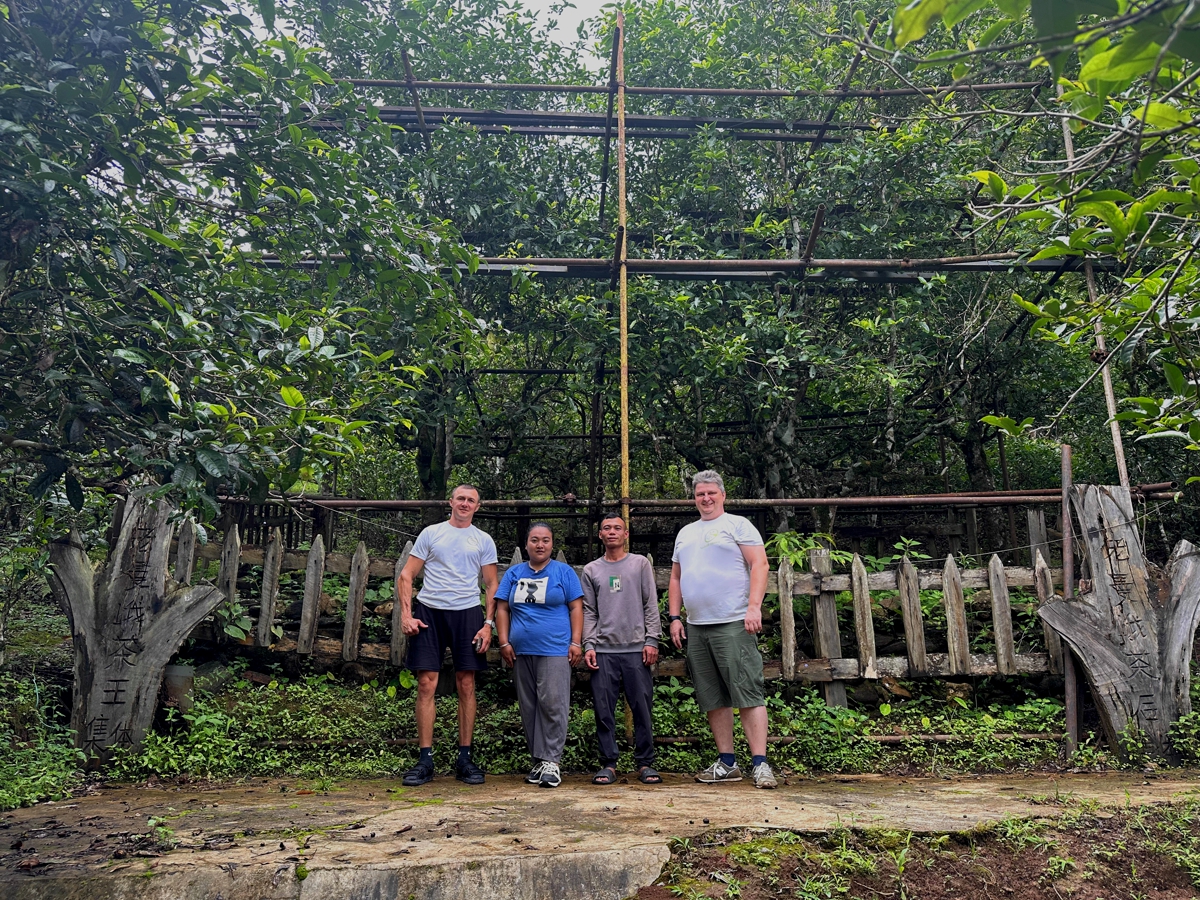Lao Man E Tea Region
The article "Lao Man E Old Tree Leaf Tea: History, Geography, and Features" will immerse you in the world of unique Chinese tea produced in the village of Lao Man E, located in Yunnan Province. You will learn about the geographical location of the village, its history, which dates back more than 1,300 years, and how this region became famous for producing bitter tea. The article also details the characteristics of Lao Man E tea, its taste and aroma, as well as the efforts made by the villagers to preserve ancient tea gardens and maintain the quality of the product.
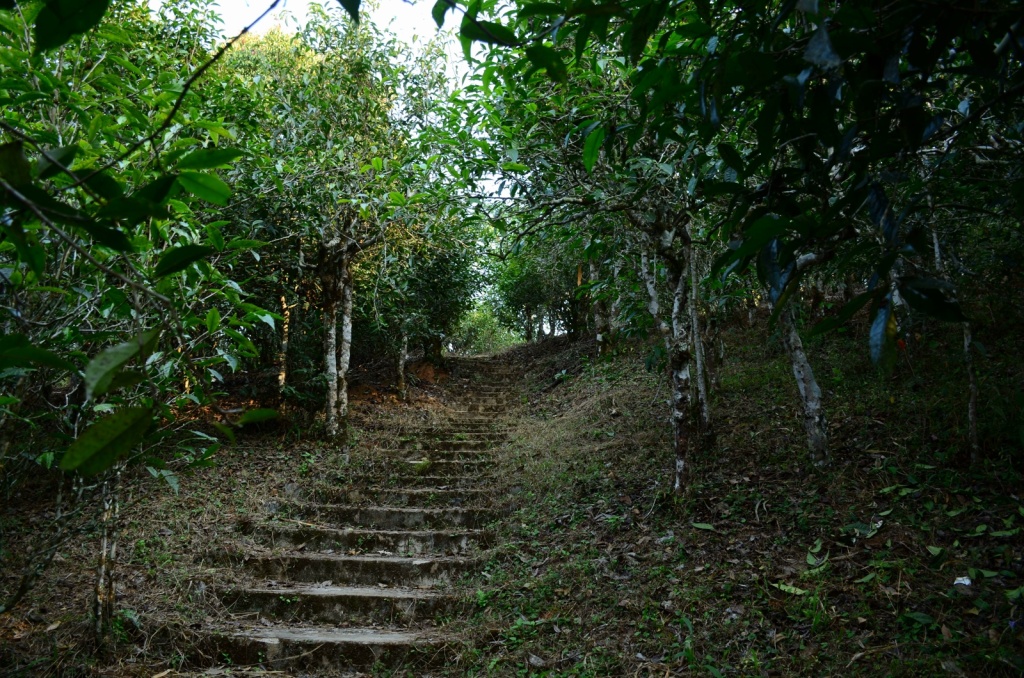
The Lao Man E (Chinese: 老曼峨, pinyin: lǎo màn é) tea industry is located in the central part of Bu Lan Mountain (Chinese: 布朗, pinyin: bù lǎng) in the Menghai (Chinese: 勐海, pinyin: Měng hǎi) District of Xishuangbanna County (Chinese:西双版纳, pinyin xī shuāng bǎn nà), Yunnan Province (Chinese 云南, pinyin yún nán).
The leaves of the tea trees here are large and dense. This tea is difficult to drink, it is usually thick, especially strong, with strong bitterness and slight astringency, with a rich aroma, pronounced taste and a good sweet aftertaste.
Lao Mane is located in the heart of Bu Lang Mountain in Menghai County, Xishuangbanna Prefecture, Yunnan Province, at an altitude slightly lower than Lao Ban Zhang Village (Chinese: 老班章, pinyin: lǎo bān zhāng), an area with consistently high temperatures and humidity. Qi Ran Village (Chinese: 自然, pinyin: zì rán) in Lao Mane belongs to the Ban Zhang (Chinese: 班章, pinyin: bān zhāng) Village Committee, Bu Lang Township (Chinese: 布朗山乡, pinyin: bù lǎng shān xiāng) in Menghai County, Yunnan Province, and is located in a mountainous area. The village is located northeast of Bu Lang Town, 16 kilometers away from the township office. Its area is 68.4 km2 , the altitude is 1650 m above sea level, the average annual temperature is 18-21°C, the annual rainfall is 1374 ml, which is favorable for growing rice, tea and other agricultural crops; the main income for residents comes from crop production and livestock farming.
The village name "Lao Man E" has existed for over 1,300 years. Lao Man E is located about six kilometers from Bu Lan Township and about five kilometers from Xin Bang Zhang (Chinese: 新班章, pinyin: xīn bān zhāng), and in rainy weather the roads become muddy and difficult to pass. Today, the tea from this area bears the name of the village and has become well-known in the tea world due to its unique taste. It produces mainly bitter tea, which has gained worldwide recognition.
Lao Manhè Village is located in the remote mountains on the border of China and Myanmar, but it is widely known in the Dai Xishuangbanna Autonomous Prefecture (Chinese: 西双版纳傣族自治州, pinyin: xī shuāng bǎn nà dǎi zú zì zhì zhōu). This is because it is an ancient and also the largest village of the Bulang (Chinese: 布朗族, pinyin: bù lǎng zú) people in Menghai County. According to a stone stele in the village's ancient temple, the date of its foundation coincides with the first year of the traditional Dai (Chinese: 傣, pinyin: dǎi) calendar, making the village currently 1371 years old. The ancient tea gardens here testify to the long history of tea cultivation by the Bulang people's ancestors, the Pu people (Chinese: 濮人, pinyin: pú rén).
Lao Man E Village is one of the key areas of the ancient Bu Lan Mountains, under the village committee of Ban Zhang (Chinese: 班章, pinyin: bān zhāng), and is home to 156 households with a population of 760 people, where the main crops are tea and rice. During the conversation, we learned that Lao Man E Village still preserves 3,205 mu (Chinese: 亩, pinyin: mǔ) (approximately 213 hectares) of ancient tea gardens, which are spread throughout the dense forests around the village. Nowadays, more and more tea merchants and tea lovers have become interested in Lao Man E old tree tea, and the valuable ancient tea gardens left by ancestors bring considerable income to their descendants. Therefore, each family pays more attention to the maintenance of the ancient tea gardens and puts in a lot of effort. The village has strict rules and regulations to preserve the original ecological environment of the ancient tea gardens, and residents are prohibited from using pesticides and chemical fertilizers to ensure the unique quality of the Lao Man E old tree tea.
Tea tree propagation
Lao Man E tea trees are located around the village, mostly old cultivated tea trees, aged between 100 and 500 years. There are also small tea trees, planted only a few decades ago. The tea made from these young trees is called "sweet tea" (Chinese: 甜茶, pinyin: tián chá), but we will not discuss it here. We will only talk about the bitter Lao Man E tea, made from the leaves of old trees. The ecology of Lao Man E is preserved in its original state, with a large forest cover, and the old tea trees grow among other forest trees, so from a distance only the trees are visible, not the tea bushes.
Local ethnic minorities such as the Bulan, Aini (Chinese: 爱伲族, pinyin: ài nǐ zú) and others have their own traditional tea making methods, which, combined with the unique local topography, climate, soil and sunlight, create the special characteristics of the aroma and taste of Lao Man E tea. During the autumn and spring tea picking seasons, many tea merchants and tea lovers from different provinces come every day to select and buy tea from old trees.
Since 1999, Bu Lan has been included in several different lists of national pilot areas for comprehensive development for minority peoples and key areas for poverty alleviation in the province, as the government stepped up poverty alleviation programs. With government support and technical assistance from the county tea industry bureau, Lao Man E residents have planted more than 4,000 mu (about 267 hectares) of new organic tea gardens. Although their quality is inferior to that of old-tree tea, they are the best of their kind and sell well, becoming a new “money tree” for the villagers.
The Bulang people are descendants of the ancient Pu people who lived in Bu Lang since ancient times and are one of the first peoples in the world. They cultivated, produced and consumed tea. Bu Lang is also the national homeland of the people of the same name and one of the ancient six tea mountains beyond the Yangtze, the historical homeland of their ancestors, known as the Pu people, who were the first to cultivate tea trees. Among them, the oldest village, Lao Man E, has existed for almost 1,400 years, with more than 140 families and more than 600 people, all of whom are Bulang.
The entire Bu Lan township comprises seven village committees: Menan (Chinese: 勐昂, pinyin: měng áng), Zhangjia (Chinese: 章家, pinyin: zhāng jiā), Xinlong (Chinese: 新龙, pinyin: xīn lóng), Mannan (Chinese: 曼囡, pinyin: màn nān), Jiliang (Chinese: 吉良, pinyin: jí liáng), Manguo (Chinese: 曼果, pinyin: màn guǒ) and Banzhang (Chinese: 班章, pinyin: bān zhāng), consisting of 51 village groups with a total population of 17,843 people. There are more than 12,000 mu (about 800 hectares) of ancient tea gardens in Bu Lan Township, which are mainly located in village groups such as Lao Ban Zhang (Chinese: 老班章, pinyin: lǎo bān zhāng), Xin Ban Zhang (Chinese: 新班章, pinyin: xīn bān zhāng), Lao Man E (Chinese: 老曼娥, pinyin: lǎo màn é), Mannuo (Chinese: 曼糯, pinyin: màn nuò), Padian (Chinese: 帕点, pinyin: pà diǎn), Man Xinlong (Chinese: 曼新龙, pinyin: màn xīn lóng), Man Ba (Chinese: 曼捌, pinyin: màn bā), Mannan Lao Zhai (Chinese: 曼囡老寨, pinyin: màn nān lǎo zhài) and Jiliang (Chinese: 吉良, pinyin: jí liáng). There are also more than 18,000 mu (about 1,200 hectares) of plantation (slope) tea gardens and widespread wild bitter and sweet tea trees throughout the township, providing quality raw materials for the production of high-quality tea.
Characteristics of tea
Bitterness is one of the main characteristics of Lao Man E tea. The tea leaves are dense, thick, tightly twisted and with noticeable villi. The tea from them is transparent and bright, with a rich and bright taste, with repeated brewing it retains the aroma, has a high resistance to brewing. The taste is bitter at first, but the bitterness quickly disappears, leaving a pleasant sweetness. The tea has a unique and long-lasting refreshing effect. The leaves of old Lao Man E trees are large and dense. Such tea is difficult to drink, it is usually thick, especially strong, with a slight astringency, rich aroma, pronounced taste and a pleasant sweetish aftertaste. The following main characteristics of tea can be distinguished:
- thick leaves and large twisted stripes;
- the drink is golden in color, transparent and bright;
- bitterness like centaury, but after the bitterness comes sweetness;
- after 5-7 brews, a feeling of salivation and sweetness appears on the back of the tongue;
- Although the tea is very tart by nature, after ten brews the taste becomes even softer and more refreshing, and has a high resistance to brewing.
Translation of the article:
https://baike.baidu.com/item/%E8%80%81%E6%9B%BC%E5%B3%A8%E5%8F%A4%E6%A0%91%E8%8C%B6/4281170
- Comments
- Vkontakte





